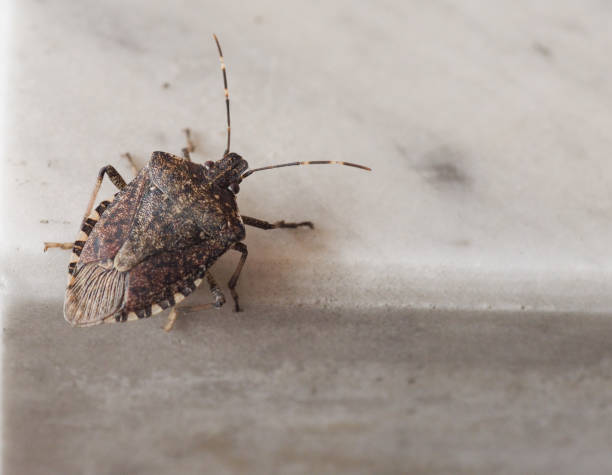All About Stink Bugs
Stink bugs, known for their distinctive foul odor, are a significant pest problem, particularly in agriculture and homes. Their ability to damage crops and invade buildings makes them a critical pest to control. This page will help you understand, identify, and manage stink bugs effectively.
What are Stink Bugs?
Stink bugs belong to the family Pentatomidae and the order Heteroptera. There are approximately 5,000 species of stink bugs, with the most common species in North America being the green stink bug (Chinavia hilaris). They are also referred to as the brown marmorated stink bug (BMSB).
Stink bugs are known for their ability to produce foul-smelling secretions as a defense mechanism. They are characterized by their oval, broad, and slightly convex shape, and can be brown, green, or metallic in color. They are commonly found on plants and are recognized by their distinctive odor.
How to Identify Stink Bugs
Appearance:
- Size: Generally range between 5 and 12 mm (0.2 to 0.5 inch) in length; can grow to nearly 2 cm (0.8 inch).
- Color: Brown, green, or metallic.
- Shape: Oval, broad, and slightly convex.
- Distinguishing Features: Fully developed wings in adults, allowing them to fly; the characteristic foul odor produced by their secretions.
Similar Pests:
Stink bugs can be confused with other shield-shaped insects. To distinguish them, note their unique odor and wing structure. The green stinkbug (Chinavia hilaris) is commonly found in North America and has a solid green color with yellowish-orange borders.
Activity and Seasonality
Active Seasons:
Stink bugs are most active in late summer and fall, particularly as temperatures begin to drop. They seek shelter indoors during cooler months.
Lifecycle:
- Eggs: Female stink bugs deposit about 100 or more ornate, barrel-shaped eggs in rows or clusters.
- Nymphs: Immature stages are yellow and red, molting five times before reaching adulthood.
- Adults: Can hibernate during winter in cooler climates; less active in warmer climates.
Where to Find Stink Bugs in or Around Your House
Common Habitats:
Stink bugs are often found in gardens, on fruit trees, and in crops. They enter homes looking for shelter in late summer and fall.
Specific Hiding Spots:
- Indoors: Around windows, doors, and cracks in the walls. Commonly found in sunny areas of the home.
- Outdoors: On plants, trees, and other vegetation where they can feed and lay eggs.
How to Get Rid of Stink Bugs
Immediate Action:
- Avoid crushing stink bugs, as this releases their odor.
- Use a vacuum cleaner to remove live or dead stink bugs, and discard the bag immediately to prevent odor.
Professional Treatments:
- Contact a licensed pest control professional like PCC for comprehensive treatment and prevention strategies.
DIY Methods:
- Seal cracks around windows, doors, and other entry points.
- Use insecticidal sprays specifically designed for stink bugs.
How to Prevent Stink Bugs
Seal Entry Points:
- Seal all cracks and gaps around doors, windows, and utility pipes.
- Repair or replace damaged screens on doors and windows.
Change Exterior Lighting:
- Use less-attractive yellow bulbs to reduce attraction to light.
Home Maintenance:
- Regularly check for and seal potential entry points.
- Maintain good exterior home conditions to minimize pest attractions.
Professional Assistance:
- Contact Pest Control Consultants for expert preventive treatments, especially in late summer or early fall.
Conclusion
Stink bugs can be a significant nuisance and agricultural pest, but understanding their behavior and implementing preventive measures can help manage and reduce infestations.
If you’re dealing with a stink bug infestation, contact Pest Control Consultants today for a free consultation and effective treatment plan. Our experts at Pest Control Consultants are here to help you tackle the problem efficiently and prevent future issues.
